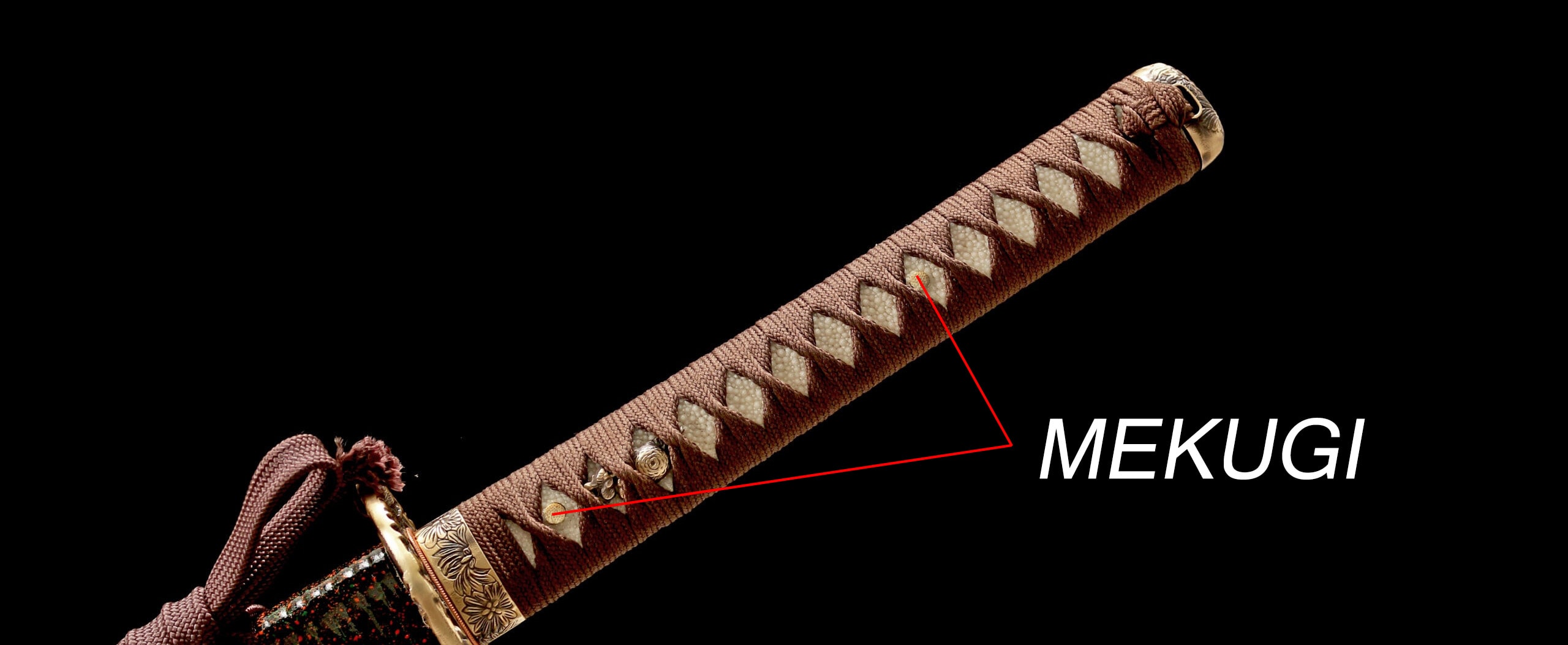The mekugi is a small peg made of bamboo or wood that is used to attach the sword blade to the hilt (tsuka). The mekugi is inserted into a hole in the tang of the blade and into the corresponding hole in the hilt, where it is secured by a metal pin (mekugi ana).
What is the purpose of the Mekugi?
The mekugi serves several important functions in the construction and use of a katana. It holds the blade firmly in place in the hilt, preventing it from slipping or moving during use. It also allows for easy disassembly of the sword for maintenance or repair, as the mekugi can be removed to separate the blade from the hilt.
Crafting a Mekugi:
Creating a proper mekugi requires a high level of skill and craftsmanship, as the peg must be carefully shaped and adjusted to ensure a perfect and secure fit in the hilt and tang. A well-made mekugi can improve the stability and overall performance of the sword, while a poorly made mekugi can lead to instability or even breakage during use.
The symbolism of the Mekugi
Besides its functional role, the mekugi also plays a symbolic role in the construction of a katana. The insertion of the mekugi into the hilt and tang is considered a ritual act that imbues the sword with spiritual energy (ki). It also symbolizes the unity of the blade and the hilt, as well as the unity of the swordsman and his weapon.

